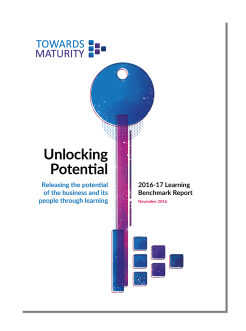Virtually there – VR AR World London
By Rob Hubbard, LAS Director

I took a trip down to London recently for AR VR (Augmented Reality Virtual Reality) World. It was a small affair with geeks rather than sales people manning most of the stands. They were more interested in sharing their enthusiasm for their products, many of which were at prototype stage, than making a sale.
A few highlights:
There were booths you could sit in where the temperature, smell, sound, wind and vibrations were all manipulated in-sync with the VR you were immersed in, giving a truly immersive multi-sensory experience www.sensiks.com. I can see great applications for this in building empathy in others. Imagine experiencing the sights, sounds, smells and heat of a shanty-town or refugee camp.
There were a few exhibitors that combined physical objects with VR. I walked round what looked in reality like a rubbish maze – however, when combined with VR this was transformed: I was, instead, exploring underground caves, inching along precipices above molten lava (is there any other kind?) and fighting off giant spiders www.aisolve.com The latter of these genuinely got my adrenalin going – intellectually I knew I was in Olympia, but my senses told me that with one wrong step I would plummet to my death or the giant spiders would scuttle up my trouser leg if I didn’t torch them.
There were some interesting developments in haptic feedback – essentially ways to make it feel like you are touching a physical object in virtual reality. There were prototypes of little blocks you strapped to the ends of your fingers www.gotouchvr.com.They would apply gentle pressure to your fingertips when you touched an object in the VR sim. They were surprisingly effective. There was also a dentistry training sim where you could practice giving an injection to a patient. You could feel the syringe against the patient’s teeth and the resistance in pushing the needle into the gum, or pushing too far and hitting bone.
My personal favourite was the VR equivalent of a hamster ball – a way you could ‘walk’ and move in a sim. It looked pretty funny but would mean you’d get some exercise at the same time.
It turns out that you don’t need to do much to fool the brain into thinking you are somewhere you are not. I also like the immersion aspect of VR – it blocks out distractions and helps people to focus.
What applications do I see for this technology for learning in development? Some; but it’s still expensive, so it’s typically only used where other forms of training are more costly / dangerous / substantially less effective – or it’s a vanity project. It is still a young industry with the players finding their way. It’s virtually there – but not quite.
by Tess Robinson, Director, LAS
Being immersed in the digital learning world, it’s easy to forget that there are an awful lot of people out there who are just exploring using technology for learning for the first time and boy can it be overwhelming… what author-tool, LMS, LRS, design methodology do I use? Do I need to gamify it, make it responsive, record user data. What about AR, VR and all this newer tech – should I be looking at that and oh what a lot of providers there are, how do I know who to choose? Fear not, here are our top tips and essential resources for newcomers:
- Start by investigating what technology your organisation already has. If you can piggyback on something that your learners are already familiar with, there will be less resistance (providing they like the tech of course) and it will also be cheaper.
- Take your organisation’s culture into account and also the micro-culture of the audience you’re designing learning for – Note: this can be very different to the stated culture of the organisation.
- Consider what is already successful in your organisation. For example, does it have a flourishing community of practice or does that sort of thing generally fall flat?
- Look for real problems to solve. Where possible align with your organisation’s strategic goals. This point is important and has the potential to transform your role from a training shop into a strategic partner for the business.
- Don’t get distracted by fancy technology. If you want to give people the physical experience of doing something risky in a safe environment, VR might be a good choice but if it’s compliance training you’re after, another form might be better value.
- Join professional associations and groups and use their networks to get advice. The elearning industry is a very supportive one and you won’t be short of help.
- Be curious and open. If there is a technology or supplier you’re interested in, talk to some of their other customers to get a feel for what they’re like to work with. Ask for recommendations from others. Be prepared to share your experiences too.
- Look at best practice in other organisations through awards entries, conferences and workshops. Spot trends through connecting to people and groups on LinkedIn and Twitter. Attend all the webinars and events you can to build your knowledge and network.
- Read the blogs of the best in elearning. Our favourites include Elliott Maisie, Clive Shepherd, Jane Hart, Cathy Moore, Craig Weiss, eLearning Learning.com You can also check out the annual eLearning Movers and Shakers list for more global digital learning thought leaders.
- Finally, think about your own strengths. What do you bring to the table and where do you need the support of others? Getting an expert in to help you make key choices could be a wise move if you lack the relevant skills yourself. It’s OK to get help if you need to.
Professional associations, groups and other useful organisations
eLearning Network (UK and Europe) – supportive professional networking through events. Mentoring also available. Small membership fee.
Learning and Skills Group (LSG) – active network, regular webinars and run the largest Learning Technologies conference in Europe
ATD (US and branches in UK and Europe). Professional association. Membership fee.
Towards Maturity – Really useful independent research resource. They publish a number of reports throughout the year including a major annual benchmarking one.
Learning and Performance Institute (LPI) – lists of accredited providers and guides to purchasing learning.
Keeping potential locked up
by Tess Robinson, Director, LAS
Why oh why is The Towards Maturity benchmark report – Unlocking Potential – such depressing reading each year! So many good intentions and a stack of really, really compelling evidence on the benefits of implementing learning innovation just don’t seem to be enough fo r many organisations to secure the support and funding needed to propel them forwards. The gap between the Top Deck organisations, who are reaping the rewards of learning technologies in terms of agility, efficiency, performance and retention, and the rest is growing ever wider. More depressingly, budgets are remaining static and even decreasing.
r many organisations to secure the support and funding needed to propel them forwards. The gap between the Top Deck organisations, who are reaping the rewards of learning technologies in terms of agility, efficiency, performance and retention, and the rest is growing ever wider. More depressingly, budgets are remaining static and even decreasing.
There is a pressing need for organisations to be agile in the current climate. The pace of technological change, the uncertain political and economic situation in many countries and competition from smaller companies, less burdened by bureaucracy, means that many established organisations really need to up their game. Learning is no longer a ‘nice-to-have’ but an essential element of survival and learning technologies have a vital role to play in the delivery of that learning.
Yet still 2/3 of organisations surveyed by Towards Maturity are not achieving their goals in any of the five categories of learning outcomes – influencing culture, cultivating agility, boosting performance, fine-tuning processes and improving efficiency. This needs to change!
 62% of organisations report that staff lack the skills to manage their own learning. Do they? In fact the report found that 82% of learners know what learning they need and 91% are resourceful and capable of searching for information to help them do their jobs better. Perhaps it’s time to give your people more credit for managing their own learning.
62% of organisations report that staff lack the skills to manage their own learning. Do they? In fact the report found that 82% of learners know what learning they need and 91% are resourceful and capable of searching for information to help them do their jobs better. Perhaps it’s time to give your people more credit for managing their own learning.
59% of L&D lack the skills to implement and manage eLearning. This is where professional networks come in. The eLearning Network (eLN) has a fabulous mentoring programme for those starting out in learning technologies. Providers, external consultants and peers in other organisations are also amazing sources of support and guidance. You don’t have to do it on your own and it doesn’t have to be expensive to get started.
58% of line managers are reluctant to encourage new ways of working, but when they do, the results can be truly transformative! Jeff Kortenbosch from AkzoNobel ran an inspirational session on how they had transformed their learning and repositioned L&D within the organisation at OEB in December. He showed that with a little courage (and a whole load of evidence), it can be done.
The thing is: these could be exciting, transformative times for L&D. This is your moment to step into the limelight and become an essential, strategic partner within your organisations – you can be the ones who truly make the difference. We’d all love to see more organisations benefitting from learning technologies in next year’s report, instead of all these good intentions coming to nothing. Be brave, use the evidence, get support from your networks and make it happen!
Who owns learning? 5 reasons to give your learners more control
By Tess Robinson, Director, LAS
If we’re honest, no one really likes just being told stuff. Cast your mind back to the last conference you attended. I bet there were some sessions where the speak er was just speaking at the audience, where you perfected your doodling, caught up on your emails or drifted off entirely. I much prefer the sessions where I’m encouraged to talk to other participants, to discover things, to make connections, to try concepts out for myself in my own context and to get feedback from others – I bet you prefer those sessions too and more importantly, I bet you remember them much more clearly. Learning cannot just be about transfer of information, that sort of learning just doesn’t stick.
er was just speaking at the audience, where you perfected your doodling, caught up on your emails or drifted off entirely. I much prefer the sessions where I’m encouraged to talk to other participants, to discover things, to make connections, to try concepts out for myself in my own context and to get feedback from others – I bet you prefer those sessions too and more importantly, I bet you remember them much more clearly. Learning cannot just be about transfer of information, that sort of learning just doesn’t stick.
When your learners are given the chance to ‘own’ their learning, to ask questions and to apply their thinking, that’s when they really become engaged. All organisations want employees who are motivated, innovative and flexible. Giving them opportunities for discovery and for driving their own growth can be very positive for self esteem, confidence and job satisfaction and creates an environment where employees feel that they have a real stake in the success of the organisation.
Here are 5 more reasons to give your learners more control:
- It shows that the organisation has trust in their people. This inspires confidence in learners and is very motivating; not only in terms of their learning itself but also in terms of how connected they feel to the organisation and their place in it as a whole. This positive effect on retention and engagement is really important. According to Harvard Business Review, 71% of business leaders see employee engagement as one of the three most critical factors to the success of their organisations.
- If learners own their own learning, this allows them to personalise their learning journey and focus on improving their own specific weaknesses. This makes learning more efficient and effective and prevents organisational resources being spent on teaching people things they already know.
- Learners can access information and resources at the point of need, increasing business agility and giving people the ability to confront challenges and draw out the resources needed to find solutions.
- Information can be easily updated. Learners don’t have to wait until the next training course to find out new things that can help them with their job role or personal development. Resources can be updated as they change, increasing accuracy and again improving the ability of the business to respond to challenges as they arise. User-generated content, moderated by the learners themselves can be a very effective way of keeping information current.
- This approach focuses much more on ‘performance’ than ‘training’ and opens the door to lightbulb moments which can really push your organisation forward and give you the edge.
How to make best use of your training budget in 3 steps
In uncertain times, L&D budgets have a tendency to get slashed. Th is doesn’t need to herald doom and gloom. It’s an ideal time for L&D to reposition yourselves as integral to the business, as consultative partners who help to support wider organisational strategy and goals, rather than as a training shop.
is doesn’t need to herald doom and gloom. It’s an ideal time for L&D to reposition yourselves as integral to the business, as consultative partners who help to support wider organisational strategy and goals, rather than as a training shop.
So how do you do this with a limited budget?
We always recommend looking for learning and performance problems to fix, or opportunities to capitalise on, and directly targeting them with projects. That way, you spend your budget where it will have the most positive impact for the business. It is easy to be seduced by new tech – resist! Instead….
- Make better use of what you already have
- Supplement / add to it to fill gaps
…in that order.
Within the organisation will be problems and opportunities of different magnitudes. These might range from a small niggle that requires a ‘work-around’ in order for people to get their jobs done, through to large problems that generate risk and cost the organisation money. We use a process with customers to identify and prioritise these problems and spot opportunities:
- We start by talking to them, their stakeholders and a range of people across the function or business. These are short, informal chats where we ask about where they think improvements can be made or ways of working improved. What should happen is that, as we collate these, a number of problems or opportunities appear, triangulated by the independent comments of different stakeholders.
- Next, we attempt to quantify the problems and opportunities. We aim to put monetary figures against them. This might include errors made and the cost to put them right, time costs, efficiency losses, sales opportunities lost, cost of non-compliance and so forth. We ask questions during the interviews to start to quantify the problems and opportunities.
- Then we prioritise the problems in order of magnitude and impact on the business. You should then spend your budget addressing the most impactful problems and capitalising on the most valuable opportunities. Each of these high-impact problems / opportunities should become a project with an appropriate budget attached to solving it based upon it’s magnitude.
This simple approach means you’ll be focused on outcomes, aligned to the business and making a real difference in what you do. It will also lead you away from costly traditional training approaches and towards practical solutions to real problems and opportunities.
The importance of learning in uncertain times
by Tess Robinson, Director, LAS
The UK’s recent referendum on whether we should stay in the EU produced a shock result that has led  to political and economic turmoil on an unprecedented scale. The VUCA acronym (Volatility, Uncertainty, Complexity, Ambiguity) has never felt more apt in this country. This is not to say, however, that all is lost. The organisations that will survive and prosper are those who are well-prepared for change and who can focus on it positively.
to political and economic turmoil on an unprecedented scale. The VUCA acronym (Volatility, Uncertainty, Complexity, Ambiguity) has never felt more apt in this country. This is not to say, however, that all is lost. The organisations that will survive and prosper are those who are well-prepared for change and who can focus on it positively.
The real key to successful change, of course, is people. In uncertain times, learning takes on new significance in terms of helping people to adapt to new roles or new ways of working and giving them the skills they need to be successful. Investing in the development of your people also shows them that they are valued. This positive message can relieve the stress of insecurity and help focus them on the organisational goals and the tasks in hand.
Getting learning right at these times can give organisations an enormous competitive advantage, enabling them to be agile and adapt to new situations quickly. So what does right look like?
- Learning which is helping people become more agile works best if it is agile itself. This is not the time for lengthy modules, but for bite-sized learning that is produced quickly, in order to respond to volatile conditions. Digital learning is ideal, as time out of the business is minimised and it is cheaper to deliver than F2F learning.
- The bite-sized learning must be closely aligned to organisation goals. Learning can play a key role in communicating these goals and galvanising people to work towards them.
- Give people the opportunity to collaborate with each other. You’ll weather the storm better if everyone pulls together as a team.
- Look to your leadership team, not only as visible sponsors of the learning, but also to strengthen their skills. Good leaders become even more important in times of change.
Clarity of job expectations, personal development, feedback, communication and relationships are all important drivers of employee engagement. All of these things can be enhanced or reinforced through learning. Engaged employees have been found to be up to 43%* more productive and 87%** less likely to leave their organisation. Greater productivity, agility, a positive, goal-driven attitude and being able to hold on to your best people is exactly what is needed when it all gets VUCAed up.
*Lockwood, Nancy R. “Leveraging Employee Engagement for Competitive Advantage: HR’s Strategic Role.” HRMagazine Mar. 2007: 1-11. SearchSpot. ABI/INFORM Global (PQ). McIntyre Library, Eau Claire. 22 Apr. 2007
**“Employee Commitment Remains Unchanged….”. Watson Wyatt Worldwide. 2002. Retrieved 2006-11-07.
by Tess Robinson, Director, LAS
Traditional economics is based on the assumption that humans are rational beings, that we evaluate our situation in a logical way, making decisions based on cost- benefit analyses. Behavioural economics turns this on its head and suggests that, actually, we are myopic creatures whose choices are loaded with emotions and cognitive bias. We make mistakes too – lots of them!
benefit analyses. Behavioural economics turns this on its head and suggests that, actually, we are myopic creatures whose choices are loaded with emotions and cognitive bias. We make mistakes too – lots of them!
Behavioural economics brings in ideas from psychology, neuroscience, sociology and microeconomics to explain the way that decisions are made. Although primarily focussed on economic decisions, this way of thinking has interesting implications for learning design.
Behavioural economics, as the name suggests, is all about behaviour and behaviour change – the Holy Grail for learning designers. Recognising that humans won’t necessarily do what you want them to, or even do what they say they’re going to do, is the first step to understanding behaviour and ultimately being able to change and improve it. The context that people make decisions in also has a bearing on the choices they make, as does the influence of people around them.
So what lessons can we take from behavioural economics when designing digital learning?
- Context is important – learners make decisions comparatively and relatively, so it is vital that the learning is put into context. This might be via a business simulation or a realistic scenario.
- Human decision making is not perfect and people often need help in making decisions in order to overcome bias. The learning material should be presented in such a way that learners are gently nudged into making the right choices without making it so easy that it’s not a challenge and they get bored or feel patronised.
- Don’t give learner’s too many options. If you give people five options they will invariably go for the middle one. We’re programmed to avoid extremes.
- People tend to prefer instant gratification over future benefits. Immediate feedback, badges, points and other gamification tools can provide this.
- We use mental short-cuts (heuristics) to solve problems. These come from things like hindsight, recency, availability and representativeness. We are more likely to remember vivid examples, so learning with impact that tells a good story is more likely to stick.
- People like to conform and cluster together. Including some form of social learning will play well to these traits and encourage participation.
- Everyone makes mistakes and imperfect choices. Embrace this in your learning design and give people the chance to repeat activities until they get the right answers.
- The internet

- Television
- The telephone
- The bagless vacuum cleaner
- The chocolate bar
- The light bulb
The British are a nation of inventors – we like to tinker and try new things. For such a small island we have contributed more than our fair share of world-changing inventions. I’ve heard our infamous British weather be credited with encouraging our creativity – it’s rarely warm enough to spend time lounging on the beach, so instead we Brits have to find something else to do. We tinker.
In order to invent great things we need a number of traits:
- Insight – we need to be able to see past the million compromises we blindly accept every day, to see a problem awaiting a solution.
- Inspiration – we need a spark of an idea; a potential way to solve the problem that is new or different.
- Determination – we need the quiet patience to keep going at the problem; failing hundreds, even thousands of times before getting our solution to work.
As learning designers it is easy to pigeon-hole our skills. For many, electronic learning = the SCORM elearning course – this is their only answer to any learning or performance problem. The issue is, this is a solution to a very specific learning or performance problem and increasingly looks rather past its sell-by date. Compounding this our audience have increasingly high expectations of how we, as learning professionals, support them. Apps, games, social platforms, just-in-time support – people use these every day in their personal lives and increasingly expect them at work.
For many years we have been helping organisations and learning designers broaden their design thinking and skills and it has been my great privilege to tutor hundreds of learning designers. Much of what they already know is transferable to other forms of media and delivery, however often they don’t see this.
It is my belief that great design underpins any form of creation. For example; writing this article is a form of design – the problem I am trying to solve is how to transfer ideas from my head into yours. My delivery method isn’t new (a blog article) but hopefully some of my message will be.
My challenge to you as a learning professional, is to broaden your understanding of design and look at the transferable traits and skills you have. To have the courage and determination to think beyond the paradigm of the SCORM elearning course to find a real solution to a real problem.
The risky business of learning design
At a party recently I had a flash of insight. A number of disparate ideas suddenly aligned in my head with an almost audible ‘clunk’, lubricated by prosecco and stimulating conversation.
I was talking to a couple of friends about the sports I’m into and what I enjoy about them: sailing, skiing and mountain biking. In all three of these I’m not competitive. I’m not bothered about going fast or far. I don’t want to be the best. What I do enjoy are the more ‘technical’ aspects of the sports; in sailing I like close-quartered boat handling. In skiing – popping off the side of pistes and threading through the trees. In mountain biking I like the technical trails – the jumps, bumps and berms. In short I like to stretch my abilities take calculated risks. When you do – interesting things happen. Possibilities increase.
This made me think about the kinds of learning design projects I most enjoy. These tend to be the ones where we are exploring and pushing boundaries, where we’re trying to solve a problem, looking for a smarter more efficient solution. By definition we are often doing things for the first time; pushing technologies to work in new ways, approaching a problem from a different angle, being innovative in some small way. There is risk here. In trying something new you will almost always fail before you succeed – it’s a natural part of the process.
Many organisations want their people to be more innovative – it gives their company the edge over the competition. Innovation is a ‘sexy’ concept and something many people aspire to. However, to be innovative you need to be a risk-taker – to try something and fail, to get up, dust yourself off and try again – and to not feel bad about it.
How is failure viewed in your organisation? Think back to the last failure you witnessed or was a part of (gulp); were there high-fives all round, was the failure celebrated for the valuable lessons-gained? Or were those responsible shamed or reprimanded. Or worse, was the failure hidden?
I believe failure should be categorised and reacted to
accordingly:
- Failing at something that you really should be able to do standing on your head – OK, yes, that’s bad. Pull your socks up!
- Failing at something you are trying for the first time – this is a natural part of the learning process. It may be uncomfortable but an important part nonetheless.
- Failing when trying to design something – this should be celebrated! You should thank the universe or this failure and glean every insight, every lesson that you can. You can bet you’ll remember them.
If you appreciate that failure is a vital part of the design process and welcome it, you will start to take risks. You will become more innovative and your designs will improve.
The limitations of human memory are an eternal conundrum for learning designers – how exactly do you create meaningful learning experiences for learners who have a shorter attention span than a goldfish? Or who are only able to retain 7 items in their short term memory1? Perhaps microlearning is the answer?
There are certainly a wide variety of definitions of microlearning. I went to a talk on the subject at a conference recently, where the learning interventions they were discussing were up to an hour long(!) – not quite my definition of micro.
So what does microlearning look like in our world? Microlearning is short, bite-sized chunks of learning tightly focussed on essential skills or knowledge. These might be in the form of videos, blogs, games quizzes or even simulations. More often than not, they’ll be delivered to a mobile phone. With 75% of adults in the UK owning a smartphone, the majority of learners have the ability to access learning in their pockets whenever and wherever they need it.
So what is it good for?…
- Performance support
Microlearning was made for performance support. We already know that we humans struggle to retain a lot of information – having concise help available at the point of need makes a lot of sense.
- Breaking larger learning objectives down into manageable chunks
The accusation of the learning being reactive, rather than proactive is often levelled at microlearning. In terms of longer-term behaviour change, microlearning can have a role to play. Just because the learning is organised into small chunks doesn’t mean that they cannot serve a larger learning objective. Resources can be tagged and organised into learning tracks which allow the learner to gradually build up skills. Learners can also skip content that they already know. Breaking the learning down in this way makes it more convenient for learners to access it on-the-go at their own convenience.
- Agility
Because microlearning is, by definition small. It’s quick and cost-effective to produce. This enables the business to be very agile in learning delivery and to respond to rapidly changing business environments effectively.
Learners can be sent notifications to go back and repeat chunks of learning. As they’re short and focussed, learners know that this won’t take up much of their time, so may be more willing to access the learning in a spare moment.
- Gamification
Game mechanics can be incorporated very effectively into microlearning, particularly in terms of levelling up, gaining badges, encouraging daily use or competing against other learners. Just like those apps that kids love that tell them to feed their dragons every day to get coins to buy a really cool exclusive dragon, it’s possible to make those chunks fun and addictive.
In our experience, at the moment, microlearning is rarely the answer on its own. It tends to be most effective when used in a blend, as a reinforcement or performance support tool, with other more in-depth forms of learning. Every project is different though, and it’s important not to discount it as effective in its own right. Constant improvements in personal technology mean that increasingly sophisticated learning experiences can be delivered in this way, allowing the line between work and learning to further blur. We haven’t seen the pinnacle of microlearning yet.
1Miller, G. (1956). The magical number seven, plus or minus two: Some limits on our capacity for processing information. The psychological review, 63, 81-97.
